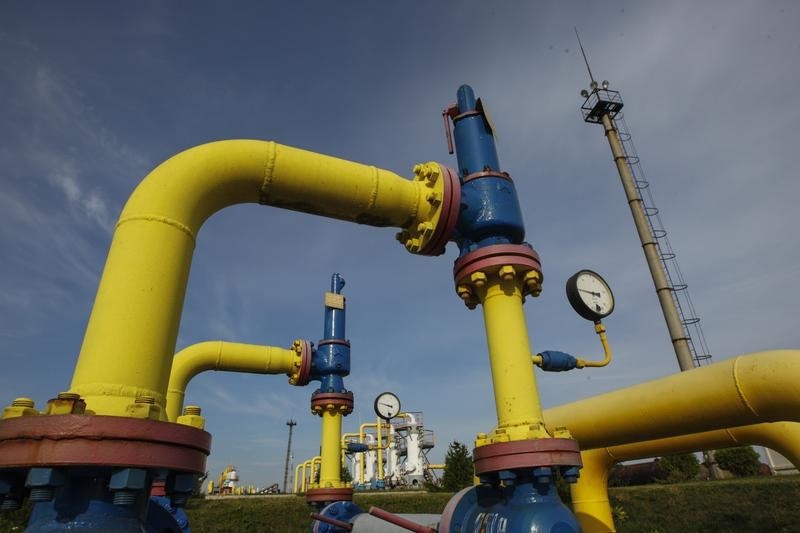Investing.com - U.S. natural gas futures initially pared losses in North American trade on Thursday, after data showed that natural gas supplies in storage in the U.S. declined more than expected last week.
The U.S. Energy Information Administration said in its weekly report that natural gas storage in the U.S. fell by 69 billion cubic feet in the week ended December 8, while analysts had forecast a decline of 60 billion.
After the release, natural gas for delivery in January on the New York Mercantile Exchange lost 1.1 cents, or about 0.41%, to trade at $2.704 per million British thermal units by 10:32AM ET (14:32GMT).
Futures had been declining by 2.4 cents, or 0.88%, at $2.691 prior to the release of the supply data.
That compared with a build of 2 billion cubic feet (bcf) in the preceding week and represented a decline of 201 billion from a year earlier and was 27 bcf below the five-year average.
Total U.S. natural gas storage stood at 3.626 trillion cubic feet, 5.3% lower than levels at this time a year ago and 0.7% below the five-year average for this time of year.
Gas futures often reach a seasonal low in October, when mild weather weakens demand, before recovering in the winter, when heating-fuel use peaks.
Analysts estimated the amount of gas in storage would end the April-October injection season at 3.8 tcf due primarily to higher liquefied natural gas shipments abroad. That would fall short of the year-earlier record of 4.0 tcf and the five-year average of 3.9 tcf.
Natural gas has been under pressure recently amid forecasts for less heating demand through late December. Earlier on Thursday, it marked its lowest price level of the year, $2.655, since February 28 when it hit $2.653.
Natural gas futures have closely tracked weather forecasts in recent weeks, as traders try to gauge the impact of shifting outlooks on early-winter heating demand.
Prices of the fuel typically rise ahead of the winter as colder weather sparks heating demand. The heating season from November through March is the peak demand period for U.S. gas consumption.
